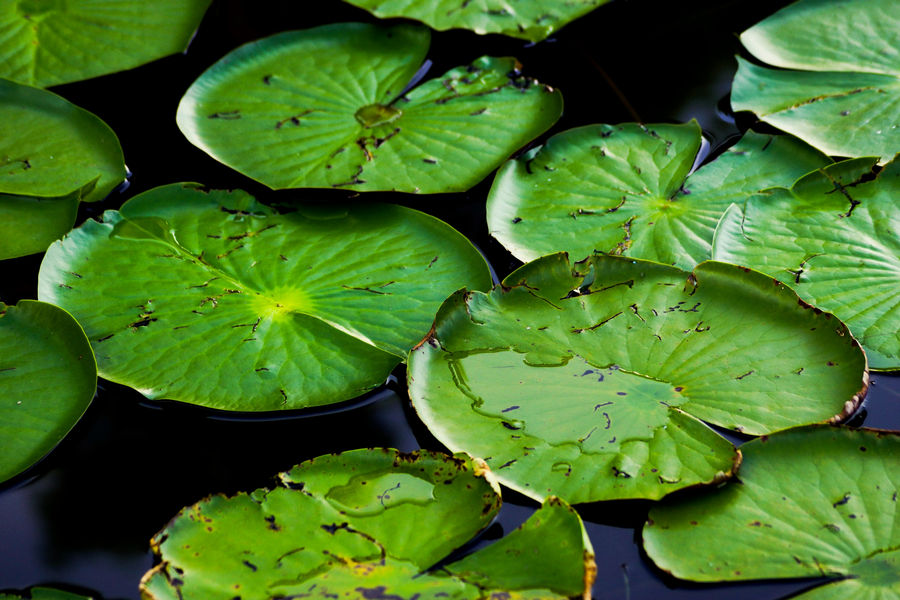Bioassessment of Florida's Aquatic Ecosystems
…using biological approaches to measure and evaluate the consequences of human actions on biological systems
Florida's Watersheds
Watersheds, or basins, are nature’s boundaries. They are the land areas that drain to a waterbody. Florida has over 8,000 lake watersheds and 52 major river basins, each with many smaller tributaries and their associated watersheds. Even the smallest of Florida’s creeks represents the beginning of a network of flowing waters that connect in a long, gradual journey to the ocean.
To improve the effectiveness of Florida’s land and water resource management programs, and to allow better assessment of the cumulative effects of all pollution sources within a watershed, these programs are currently implementing an integrated, cooperative watershed approach. This approach allows better coordination of efforts to control point and nonpoint sources of pollution, to establish total maximum daily loads, to involve the public, and to determine which mix of control strategies work best within a watershed.
Bioassessments play a major role in helping to define problem areas and evaluate the effectiveness of our pollution control efforts. Remember that "we all live downstream" and that reducing nonpoint source pollution requires all of us to be part of solution. If we all do a little, we can do a lot to help ensure future generations have clean water.
Why Study Biological Communities?
Biological communities are sensitive to stress, both natural and anthropogenic (caused by human activities). When our actions adversely affect the environment, the biological population will change, leading to an impaired or imbalanced community. Much like the "canary in the coal mine," the response of aquatic insects to changes in water quality gives us an early warning of possible harm to a waterbody. Many common insects spend their juvenile life within aquatic systems including dragonflies, mayflies, beetles, black flies and mosquitoes. These organisms show the effects of physical habitat alterations, point and nonpoint source contaminants, and cumulative pollutants over their life cycle.
What is a Bioassessment?
Bioassessments involve field sampling of aquatic biological communities to characterize community structure (i.e., diversity, pollution tolerance). They include measuring water quality indicators such as dissolved oxygen, evaluating habitat conditions and determining the health of aquatic insect communities.
To determine the biological health of a waterbody, DEP has developed multi-metric indices, which quantify the overall adverse changes caused by human activities, compared to minimally disturbed conditions.
How Can the Results of a Bioassessment be Used?
Biological monitoring allows us to directly assess waterbody health. Most importantly, biological tools serve to assess the cumulative effects of all activities occurring within a watershed. These results can be used to establish baseline characteristics for Florida’s streams, lakes, wetlands and estuaries; to characterize the overall condition of watersheds; to identify potential problem pollutants; to target more intensive diagnostic samplings; and to support land use planning and management decisions. They can also be used to evaluate the effects of management programs on waterbodies and their biological communities. Finally, bioassessments provide an excellent way of prioritizing waterbodies for special protection, restoration or rehabilitation.
Bioassessments in Action
The Florida Department of Environmental Protection uses bioassessments to assess the effectiveness of point and nonpoint source pollution controls and to evaluate the health of waterbodies. Bioassessments are currently used in the following DEP programs:
- Basin-Wide Assessments - to evaluate watershed health.
- Fifth-Year Inspections - to evaluate the discharge of domestic and industrial wastewater treatment plants.
- Forestry Nonpoint Source Program - to evaluate the effectiveness of forestry best management practices (BMPs).
- Impaired Waters Determination - streams or rivers with multiple failing SCI or BioRecon scores may be put on the 303(d) list if a causative pollutant is identified.
- Mitigation Assessments - to evaluate the success of created or restored aquatic ecosystems.
- Site-Specific Alternative Criteria - to show that a waterbody is biologically healthy under water quality conditions that may be different from the generally applicable criteria.
- Waterbody Reclassification - As part of a Use Attainability Analysis, biological assessment, used in conjunction with other physical and water quality data, may provide justification for reclassifying waters to the Class III-Limited category.
Bioassessments are also used as an educational tool in public/volunteer monitoring programs to provide basic information about watershed health.


